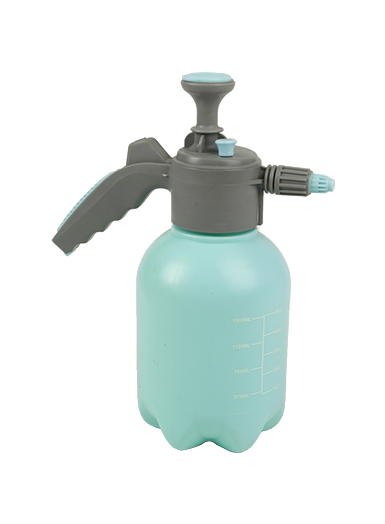It Is A Professional Sprayer Manufacturer Integrating Research, Design And Development.
+86-15824002009 Contact UsThe basic principle behind the air pressure watering can is relatively simple. The user fills the can's water reservoir, then pumps air into a designated chamber within the can. The air pressure builds up, creating a force that pushes the water through the nozzle when activated. As the air pressure is released, the water flows out of the nozzle in a controlled manner, providing an even distribution of water to the plants.

Many models feature adjustable nozzles that allow the user to control the spray pattern. For example, a fine mist might be used for delicate plants that require gentle watering, while a concentrated stream can be used for deeper watering or larger plants. Some models even include a pump action, enabling users to maintain pressure while watering for more consistent results.
One of the standout features of air pressure watering cans is their ability to deliver water evenly across a wide area. This is especially important for plants that require consistent moisture levels in the soil. Traditional watering cans often result in uneven watering, with some areas receiving more water than others, overwatering or underwatering. Air pressure watering cans, however, help mitigate this issue by ensuring that the water is distributed uniformly.
The air pressure mechanism allows the user to adjust the flow rate to match the needs of different plants. For example, the nozzle can be set to release a gentle mist for seedlings or a stronger stream for larger, more established plants. This level of control helps optimize watering efficiency and reduce waste.
Air pressure watering cans also contribute to water conservation. By providing a precise flow, users can minimize excess water usage. The fine mist or controlled stream ensures that water goes directly where it's needed—on the soil rather than on the surrounding foliage. This is particularly beneficial for gardens in areas with limited water resources or regions affected by drought.
The ability to direct water exactly where it's needed reduces the risk of runoff, which can waste water and deplete valuable nutrients from the soil. It also helps prevent overwatering, which can root rot and other issues.
The gentle watering mechanism of air pressure watering cans minimizes plant disturbance. With traditional watering cans, heavy streams of water can displace soil or damage fragile plants. The air pressure watering can's spray nozzle can be adjusted to deliver a gentle mist or a focused stream, depending on the plant's requirements.
For delicate plants or newly seeded areas, the ability to use a light mist reduces the risk of uprooting or disturbing the plants while still providing the necessary hydration. This makes air pressure watering cans an choice for young plants, delicate flowers, and sensitive root systems.
Many air pressure watering cans come with extended nozzles or spray wands, which make it easier to reach difficult spots in the garden. For example, hanging baskets or high-up plants can be watered without the need for a ladder or contorting into uncomfortable positions. The ability to access these areas without needing additional tools or stepping on fragile plants makes air pressure watering cans ideal for large or complex garden layouts.
Air pressure watering cans are designed to be user-friendly and comfortable to use for extended periods. Many models feature ergonomic handles that reduce hand strain, and some have pump mechanisms designed to require minimal effort. The lightweight design and easy-to-operate features allow users to water their gardens more efficiently without causing physical discomfort, even if they need to water for extended periods.
We will provide you with the latest product
information as soon as possible
